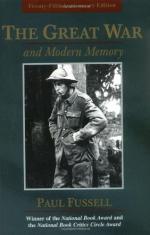
|
| Name: _________________________ | Period: ___________________ |
This test consists of 15 multiple choice questions and 5 short answer questions.
Multiple Choice Questions
1. According to Fussell, personalities change as people are exposed to _____.
(a) Drugs.
(b) Weapons.
(c) War.
(d) Rumors.
2. During World War II, where did many soldiers fight from?
(a) On another continent.
(b) In another country.
(c) Far from home.
(d) Close to home.
3. Specifically stated in the story, the troops in the trenches felt how?
(a) Officers didn't know what was happening on the front line.
(b) Officers disrespected them.
(c) All answers are correct.
(d) Officers didn't care about them.
4. Over a period of time, the soldiers became polarized in their _____.
(a) Way of life.
(b) Thinking.
(c) Spending money.
(d) Communication.
5. A rumor was that Germany had someone in the trenches prior to wartime. Who was it?
(a) Officer.
(b) Soldier.
(c) Doctor.
(d) Civilian.
6. Some rumors fed many _____.
(a) Poems.
(b) Short stories.
(c) Folktails.
(d) Lies.
7. What is the title of the second part of the trilogy?
(a) Memoirs of an Infantry Officer.
(b) Sherston's Progress.
(c) Memoirs of a Fox-Hunting Man.
(d) No answers are correct.
8. In the third volume of the trilogy, where is Sherston?
(a) Hospital.
(b) Psychiatric hospital.
(c) Front line of the trenches.
(d) A London pub.
9. Fussell makes reference that some people thought the direction the farmers were plowing was an indication of _____.
(a) No answers are correct.
(b) Troops.
(c) Wind.
(d) Treasure.
10. By the end of 1917, which country had withdrawn from the war due to the Bolshevik Revolution?
(a) France.
(b) Russia.
(c) Germany.
(d) Britian.
11. Fussell refers to the Great War as what?
(a) The most hideous and the most outrageous.
(b) The most hideous and the most humorous.
(c) The most ironic and the most humorous.
(d) The most hideous and the most ironic.
12. What month and year did America enter World War I?
(a) April 1917.
(b) April 1918.
(c) May 1917.
(d) March 1918.
13. Where were there trenches buried underground for about four hundred miles?
(a) France and Belguim.
(b) France and Germany.
(c) Germany and Britian.
(d) Belguim and Germany.
14. Fussell shares a story of a soldier who was said to be crucified. What country is this soldier from?
(a) Canada.
(b) Britian.
(c) German.
(d) France.
15. What time in the morning did the day begin for the troops in the trenches?
(a) Three thirty.
(b) Four thirty.
(c) Five thirty.
(d) Four oclock.
Short Answer Questions
1. Altogether, the Sassoon trilogy makes what type of point to the reader?
2. How many men lost their lives in World War I?
3. According to Fussell, what has been affected by time and war?
4. By mid-December 1914, British troops had been fighting on the Continent for how long?
5. Where did this battle the British commander was preparing for against the Germans take place?
|
This section contains 424 words (approx. 2 pages at 300 words per page) |

|




